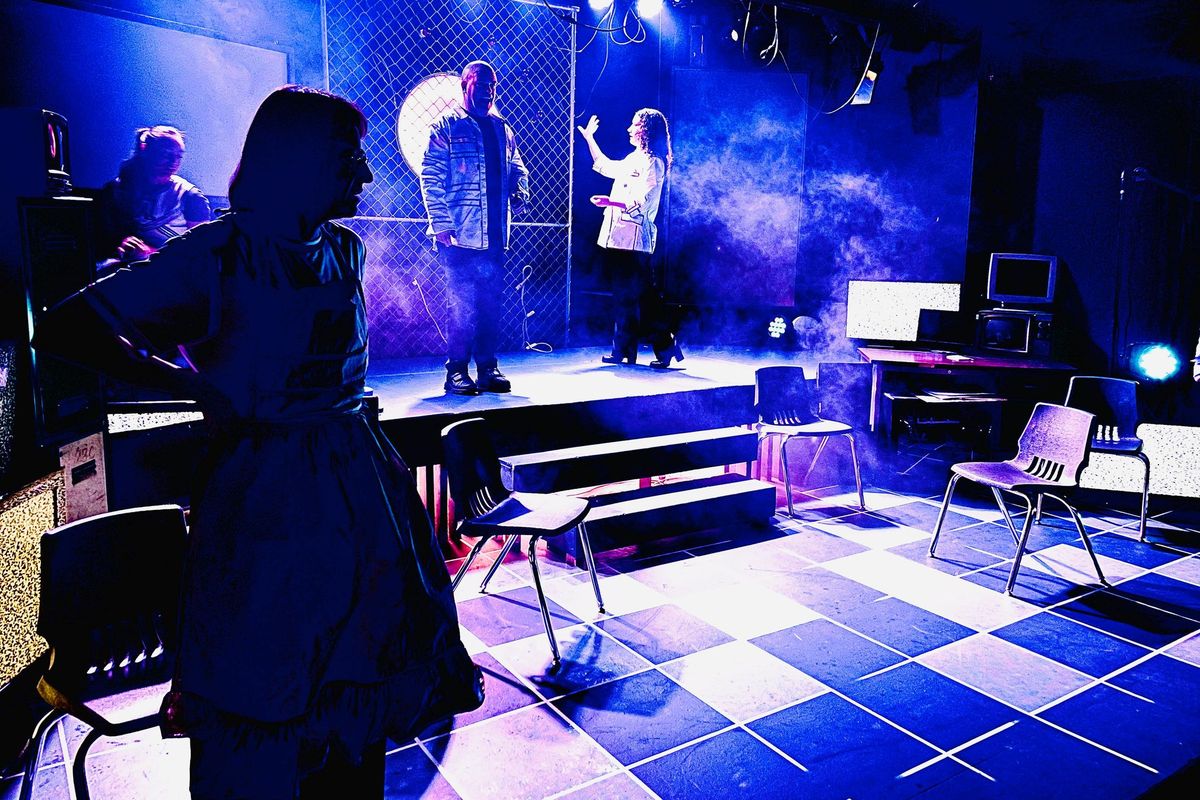‘A giant collage’ of mass shootings: Stage Left’s ‘the (same) incident’ looks at America’s indifference to gun violence

Chelsea DuVall was folding laundry on her bed listening to NPR, and she felt frustrated by what she heard – another broadcast reflecting on the college campus mass shootings that had happened in the years prior, like the shootings at Virginia Tech in 2007 and at Northern Illinois in 2008.
DuVall was a student at Northern Illinois in 2008. She recalls how the Virginia Tech and Northern Illinois student bodies connected over their mutual mourning and the shock of the violence and loss they had experienced within a year of one another.
Now it was 2012. DuVall had moved on to graduate school, yet these stories were still being told again and again as the rest of the country still processed what had happened. DuVall said she felt, “frustrated by the absurdity of the repetition.”
She was studying acting at the California Institute of the Arts, and she was independently studying playwriting with her writing mentor, Douglas Kearney, a performer, playwright, librettist and poet. Kearney was the first person who asked DuVall if she had ever considered creative writing, and that spurred DuVall to pour out her frustrations into a new work called “the (same) incident.”
DuVall workshopped the piece through the years, most recently in 2022 with Spokane Playwrights Laboratory, which is a nonprofit run by Dahveed Bullis.
Unfortunately for “the (same) incident,” the COVID-19 pandemic robbed it of its opportunity to be performed live. But the play’s fate took a new swing when Stage Left managing and artistic director Jeremy Whittington approached Bullis about directing the play.
The combination of the play’s heavy subject matter, its abstract form and its large amount of technical direction made it intimidating to take on, but Bullis felt too invested in the piece to turn down the challenge.
“Honestly, I’ve lived here my whole life … I don’t think I’ve ever seen a production like this,” Bullis said.
“I definitely would describe it as sociopolitical experimental collage theater,” DuVall said. “When I step back and look at these instances of mass shootings in the country, I see a giant collage. They’re connected, they’re overlapping, they’re all in the same space, yet they’re unique in instances because the lives that were lost are unique.
“The structure is not necessarily totally linear. There’s some linear elements, but we’re moving in and out of storylines just as we do when we tune the station on our radio or flipping channels.”
Bullis worked closely with the technical elements of the play, which were key to emulating the overstimulation and overconsumption that many Americans experience due to the 24-hour news cycle that today’s technology makes more accessible than ever.
“The video projection, the lighting, the sound – this play is sonically wild, both like digital sound and practical sound,” Bullis said. “The set itself has a lot of screens and colors and things that are going to flash at you. The costumes are one of the most unique things I’ve ever seen.”
The characters are intentionally written as archetypes, striking a balance between anonymity and relatability.
“Not many people know who these victims are,” DuVall said. “And I think the other thing is archetypes speak to the idea that it’s everyone. … It’s not just about school shootings. It’s about mass shootings.
“A lot of people go to movie theaters. A lot of people go to grocery stores and McDonald’s, and people go to university, and people drop their kids off at elementary school. So an archetype speaks to this idea that it could be anyone, could be someone you know.”
And it all goes by in a flash. The play itself only runs about one hour.
“I believe in giving people really good concentrated content, like a punch in the face and then they leave,” DuVall said. “So it’s not like a long commitment for people to come, but it is a commitment emotionally and energetically.”
Bullis said the play comes at the audience fast.
“It’s almost like scrolling through a TikTok feed so fast that you suddenly realize, oh yeah, all of that happened,” Bullis said. “This show is intense, but it’s also fun. I mean, there is so much going on that it’s kind of like, it’s an intense thrill ride in the sense that it’s like, whoa, all of this stuff is happening.”
Although its form is fleeting, the play is intended to have ripples for the audience.
“I think people are going to feel like they need to talk after watching this. And I think that’s the purpose, especially in those affected by the pandemic world,” Bullis said. “We understand the need to talk now.”